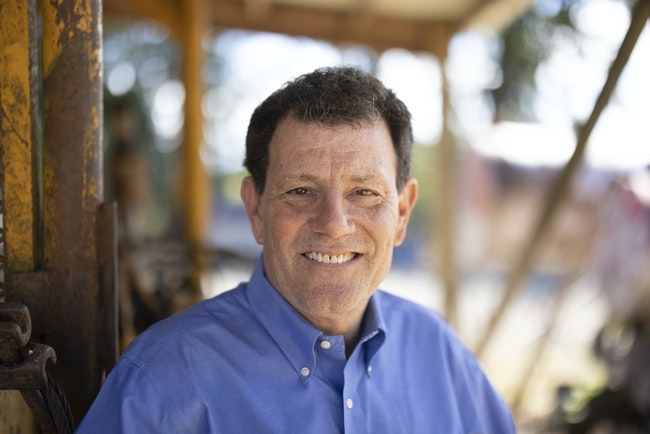
Nick Kristof, pictured on his farm in Yamhill on Sept. 11, launched his campaign for governor on Wednesday, Oct. 27. (David Hume Kennerly/Center for Creative Photography at the University of Arizona)
Longtime New York Times columnist Nick Kristof officially launched his campaign for Oregon governor on Wednesday, joining a crowded Democratic primary.
Kristof, who grew up in Yamhill and returned to his family’s farm a few years ago, has been publicly considering a run for governor for several months. He resigned from the New York Times earlier this month ahead of launching his campaign.
In an announcement video, Kristof described the Oregon of today as different and less promising than the state that welcomed his father, a World War II refugee who learned English working in a logging camp and went on to become a professor at Portland State University.
More than a quarter of his Yamhill County high school classmates are now dead because of drugs, alcohol, suicide or accidents, he said.
During the nearly four decades Kristof worked at the Times, he specialized in reporting on global humanitarian crises, winning top journalism prizes for his coverage of genocide in Darfur and the pro-democracy movement in China.
“I’ve never run for political office in my life, but I have spent a lifetime shining a light in the darkest corners of the globe, and it broke my heart when I returned from crises abroad only to find crises here at home,” he said.
Kristof created a political action committee to fundraise for his campaign a little over two weeks ago and has yet to report any contributions. Under state law, candidates have to report spending or receiving money within 30 days.
His Democratic opponents have a leg up when it comes to fundraising and name recognition. So far, House Speaker Tina Kotek and Treasurer Tobias Read lead the pack,
Read has just under $275,000 in the bank, while Kotek has just under $285,000, according to campaign finance records at the state Elections Division. The Democratic primary also includes local elected officials and activists, including Yamhill County Commissioner Casey Kulla and Patrick Starnes, the 2018 Independent Party of Oregon nominee for governor.
Whoever wins the Democratic primary will likely face a three-way race with the Republican nominee and state Sen. Betsy Johnson, a longtime moderate Democratic lawmaker who filed to run as an independent earlier this month.
Johnson has more cash than any other candidate in the race, with just over $515,000 available to spend. She doesn’t have to worry about a primary and can spend the next year focused on the November 2022 general election.
On the Republican side, Salem oncologist Bud Pierce, West Linn political consultant Bridget Barton and Sandy Mayor Stan Pulliam lead a pack of more than a dozen in fundraising. Pierce was the 2016 Republican nominee for governor in a special election, losing to current Gov. Kate Brown.
Oregon Capital Chronicle is part of States Newsroom, a network of news bureaus supported by grants and a coalition of donors as a 501c(3) public charity. Oregon Capital Chronicle maintains editorial independence. Contact Editor Les Zaitz for questions: [email protected]. Follow Oregon Capital Chronicle on Facebook and Twitter.
STORY TIP OR IDEA? Send an email to Salem Reporter’s news team: [email protected].









